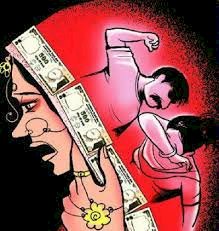The Dowry menace
For Printing Download Epaper from files section from bottom of this page

Dowry is a curse that was said to be only prevalent in Hindus. But, in a shocking revelation, in rural India, it is revealed that the menace of dowry has spread to Sikhs and Christians also. A World Bank report says that, when an examination of 40,000 rural marriages between 1960 and 2008 was made, it was found that, in these two communities more dowry is demanded than Hindus and Muslims. The government has made Anti Dowry law way back in the seventies but the law has miserably failed to control the scourge of dowry. It was expected that, with the increase in education facilities and society becoming educated, the dowry would be eliminated gradually. But the things that happened exactly reverse to it. With the high salary and top educated grooms are demanding more dowry and other perks than to lower their demand. Why this has happened is difficult to understand. Since 60 years of anti-Dowry law, there have been thousands of women had to sacrifice their lives. Another shocking feature of the dowry menace is that it has spread to states where it was relatively unknown. The deaths over 10 days of Vismaya (22), Archana (24), and Suchithra (19) following alleged violence over dowry in Kerala, the state with the best gender indices — literacy, maternal mortality, sex ratio — has revived an old conversation on an ancient malaise. Kerala is the most educated and most pragmatic state in India and it leads in every good precedent. But, it is now showing an infamous trend of anti-social precedent of dowry. With every passing day, there is one dowry death is occurring somewhere in India every hour, records the National Crime Records Bureau. This is a very worrisome trend growing and that too in the elite class is dangerous the elite class is followed by other lower classes. An examination of 40,000 marriages in rural India between 1960 and 2008 by a World Bank report finds that dowry’s taint has spread amongst Sikhs and Christians who now have higher average dowries than Hindus and Muslims. The irony is that these communities are lower in number and they are more affluent generally. Still, they are embracing the bad precedents of dowry. The traditional justification for dowry is that it is a “compensation” to daughters who otherwise would have no share in their fathers’ assets. The daughters have no control over the dowry or her share in the paternal property. They are deprived of assets on both fronts. A daughter has no control over her dowry or even a say on how it is spent or distributed. For instance, a family might use the daughter-in-law’s dowry to boost the daughter’s dowry and improve her marriage prospects. Furthermore, Hindu daughters now have equal inheritance rights as sons to ancestral property. It’s another matter that the law remains largely on paper and, anecdotally, one hears of daughters signing away their rights to maintain “good relations” with their brothers. But in theory, if the law gives daughters the right to inherit, what is the need for dowry? In all cases, the woman suffers whether she is a daughter or mother or any relation and it is irrespective of cast, creed and race. In earlier days, Hindus were targeted for the social menace of dowry but actually every community is involved in the bad precedent more or less. At the core of the issue lies not inheritance or even dowry but the status of women as invisible beings who live in the shadows of families, lurking unseen in kitchens, stripped of autonomy and agency. A women in our society has to live in shadow of their parents, then-husband and in old age, on the mercy of sons. It is her fate. No government or organization has really tried to uplift their status. Our value lies in our ability to work as unpaid slave labour, produce offspring (male, obviously, since the family name cannot possibly be passed on to women) and protect the patriarchy. In all cases, daughters have no right to choose their life partner and naturally, the cases of daughters eloping with lovers have been on increase. And, if a daughter chooses not to marry at all, we are aghast. After all, she must go to her “own” home and fulfil her destiny as a dutiful wife and mother. This is her destiny and if educated states are grappling with the social menaces of dowry, our future is bleak.

 Active Times
Active Times 
















